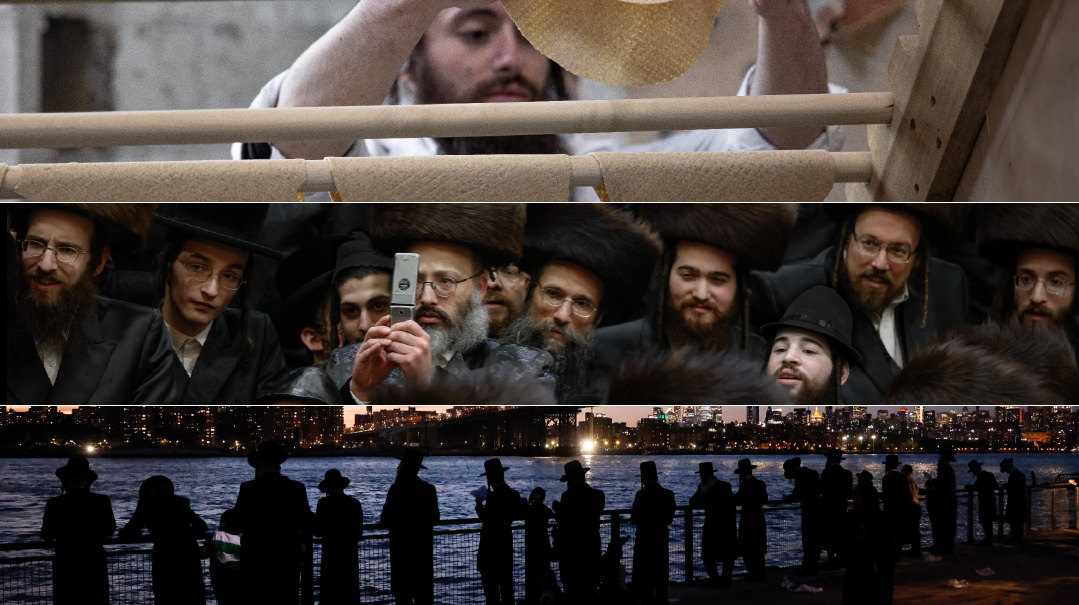Through My Lens
| April 16, 2024Abe Kugielsky’s camera goes to Brooklyn to highlight life and remove barriers

Photos: Hasidiminusa
Passionate about the color and beauty hiding in the black and white shades of chassidish life, Abe Kugielsky takes to Brooklyn streets and gets behind the lens of his camera to document the lives of a community he loves. Zooming in on the highlights and humdrum moments of life in these parts, he hopes to share the wonder and bring us together in unity and understanding
“IN Meah Shearim, if you walk around with a camera, the locals are so used to it that they’re immune. There’s a history of many decades of photographers roaming around there, with so many photo books on life in Yerushalayim, that the concept has grown on the community. Yerushalmi men have told me that their grandfathers are in the pictures in some of the well-known books. But we don’t have many photo books on chassidim in Brooklyn. I saw a potential space.”
Photojournalist Abe Kugielsky says his early education in a chassidish elementary school has helped him realize his passion for photo-documenting chassidish life in New York. “I understand chassidish nuances, and I have the language, so I can connect.”
And he does connect. Many of his accounts of the pictures he’s taken finish with, “and then we had a conversation for an hour,” or even, “I go in to visit this guy whenever I’m passing by, just to schmooze.”
As a child, Abe loved browsing through photo books, and Russian-German Jewish photographer Roman Vishniac’s piece de resistance, A Vanished World, spoke deeply to him. The family business of antique Judaica stimulated a passion for history, and Vishniac’s iconic pictures of Jewish life in the once-bustling shtetlach gave Kugielsky a sense of the power of street photography to bridge generations. While learning in the Mir in Yerushalayim, he met up with photographer Eli Greenwald (ak.a. Boruch Yaari), picking up skills and techniques to bring his hobby into clearer focus.
Photography is more widespread than ever today, thanks to phones with camera function, but Abe observed that most people only take pictures of their families, and that no one is documenting the community. He recognized the potential opportunity and in 2011, excited but afraid of rejection, he dipped his toes into the beckoning waters.
At first, Abe kept to the shadows, afraid his subjects would not appreciate being photographed. At the core of this hesitation, Abe believes, is a lack of trust. “When was the last time chassidim were in the media for positive reasons? Exposure of the community through photography almost always casts them in a negative light, going back generations. So why should they trust an outsider with a camera?”
Careful to keep a low profile, Abe would stay in the shadows looking for moments to capture from a safe distance. With time he accumulated a large collection, and after three years and 30,000 photos, he started to share the pictures online. The level of interest took him by surprise and pushed him deeper into this sideline.
Abe posted one picture a day, always with a positive comment, telling the positive micro stories of life in the chassidish sector. He’d comment on the emotion, the humanistic angle. “My story is how much we have in common as Jews, and how much we have in common as human beings.”
Initially, though, he kept himself anonymous. While his vibrant pictures of chassidish life were posted and reposted, no one knew who was behind the camera. “I’d wait a couple months to post my pictures because otherwise I’d be recognized on the CCTV system.”
Oops! We could not locate your form.







